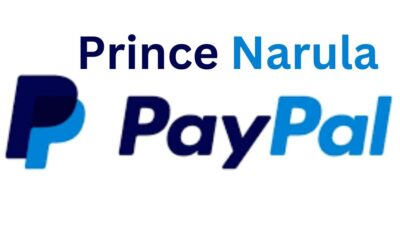TECHNOLOGY
Unveiling the Dark Origins: The Fascinating World of Grimm Fairy Tales

Once upon a time, in the shadowy corners of folklore, tales spun by the Brothers Grimm captivated audiences with their dark twists and moral lessons. These stories were not just simple bedtime narratives; they were rich tapestries woven from the threads of culture and history. As you delve into this fascinating world, you’ll uncover hidden meanings and controversial themes that challenge our perceptions. The enchantment lies not only in their whimsical characters but also in the stark realities they reflect about human nature. Join us as we journey through these timeless tales, exploring their origins, cultural influences, and how they’ve evolved over time to capture hearts anew. Get ready to see Grimms’ fairy tales in a whole new light!
The Brothers Grimm: Who Were They?
Jacob and Wilhelm Grimm, better known as the Brothers Grimm, were German scholars born in the late 18th century. Their passion for folklore led them to collect and publish traditional tales from various regions of Germany.
They initially aimed to preserve these stories as part of their cultural heritage. But what began as a scholarly pursuit evolved into something much larger. Over time, they became iconic figures in literature.
Their early volumes focused on oral traditions rather than polished narratives. This authenticity captures the raw essence of human experience—both joyful and dark.
The brothers’ work was not just about storytelling; it reflected societal values and fears of their time. Each tale serves as a window into historical contexts that shaped European culture during their lives.
Through countless revisions, the Grimms transformed simple folktales into timeless classics that resonate even today.
Controversial Themes in Grimm Fairy Tales
Grimm Fairy Tales often delve into themes that might raise eyebrows today. These stories explore the darker aspects of human nature, such as greed, jealousy, and revenge.
Take “Snow White,” for example. The tale reveals a fierce rivalry between stepmother and daughter—an unsettling portrayal of familial betrayal. This isn’t just a harmless bedtime story; it reflects real societal tensions.
Similarly, in “Hansel and Gretel,” child abandonment looms large. The children face horrific scenarios that mirror historical fears about survival in harsh times. Such narratives challenge the notion of childhood innocence.
Violence is another recurring element. Characters frequently meet grim fates through treachery or punishment, serving as stark lessons on morality’s consequences.
These themes provoke thought and conversation surrounding ethics and societal values—a far cry from the sanitized versions we see today in popular media.
Analysis of Popular Fairy Tales
Many popular Grimm fairy tales present intriguing layers beneath their surface narratives. Take “Hansel and Gretel,” for example. The tale explores themes of abandonment and survival in a hostile world, mirroring the fears faced by families during times of famine.
Then there’s “Snow White.” This story delves into vanity and jealousy, showcasing how beauty can lead to envy. The Wicked Queen’s obsession serves as a cautionary reminder about the darker sides of human nature.
“Little Red Riding Hood” offers yet another perspective. It examines innocence lost through encounters with deception. The big bad wolf embodies dangers that lurk within our own communities.
These tales resonate today because they reflect universal truths about humanity’s complexities—fear, greed, love, betrayal—all wrapped in engaging plots and unforgettable characters. They remind us that even the most whimsical stories often hide profound messages waiting to be unearthed.
Dark Origins and Cultural Influences
Grimm Fairy Tales are steeped in dark origins that reflect the realities of life centuries ago. Many stories were born from oral traditions, where tales morphed over generations. They often served as cautionary lessons for children.
Cultural influences play a significant role in shaping these narratives. The Brothers Grimm collected stories that echoed the fears and values of their time—war, famine, and morality were common themes. Each tale captures societal anxieties while providing insight into the human experience.
Nature also acted as a backdrop filled with danger and mystery. Deep forests symbolized both threat and sanctuary, embodying a duality present in many cultures’ folklore.
These elements combined create an intricate tapestry of storytelling that remains relevant today, revealing not just fairy-tale fantasies but deep-seated truths about human nature and society’s complexities.
Modern Adaptations and Reinterpretations
Modern adaptations of Grimm fairy tales have taken many forms, from animated films to gritty live-action series. These retellings often strip away the original’s harshness while infusing them with contemporary themes.
Take “Once Upon a Time,” for instance. It merges various fairy tale characters into a single universe, presenting complex motivations and moral dilemmas. The light-hearted charm contrasts sharply with the grim origins of these stories.
Animated features like Disney’s “Frozen” reinvent classic narratives by focusing on sisterly love instead of romantic pursuits. They maintain elements from the originals yet offer a fresh perspective for younger audiences.
The horror genre has also tapped into this rich folklore, producing films that delve deep into psychological terror while keeping character names familiar. This blending creates an eerie nostalgia, enticing viewers to explore darker interpretations further.
These reinterpretations breathe new life into beloved tales while encouraging discussions about their implications in today’s society.
Conclusion: The Timeless Appeal of Grimm Fairy Tales
The allure of Grimm Fairy Tales is undeniable. These stories have captivated audiences for generations, weaving together themes of morality, justice, and the human experience. Their dark origins speak to a time when life was fraught with danger and uncertainty.
Despite their grim beginnings, these tales continue to resonate in contemporary culture. They remind us that even in our darkest moments, there can be hope and redemption. The Brothers Grimm masterfully captured this balance between light and shadow.
Modern adaptations breathe new life into these classic narratives while preserving their core messages. From films to literature, the reinterpretations invite fresh perspectives on age-old wisdom.
Grimm’s legacy endures because it reflects our shared fears and dreams. It offers insight into the complexities of human nature while entertaining us along the way. The rich tapestry of characters and plots invites endless exploration—ensuring that these timeless tales remain relevant in today’s world as they spark curiosity across diverse audiences everywhere.
TECHNOLOGY
Exploring the Aesthetic: Isabelle Lynn Kertzie’s Instagram Journey

Isabelle Lynn Kertzie has taken Instagram by storm, drawing in an audience captivated by her unique aesthetic. With a keen eye for detail and an innate sense of style, she transforms everyday moments into visual poetry. As you scroll through her feed, it’s clear that each post is more than just a snapshot; it’s a carefully curated piece of art that resonates with thousands. But how did this ordinary social media experience evolve into the stunning journey we see today? Let’s delve deeper into Isabelle’s Instagram adventure and uncover what makes it so special.
From ordinary posts to curated aesthetic: Kertzie’s evolution on Instagram
Isabelle Lynn Kertzie’s Instagram journey tells a captivating story of transformation. Initially, her posts reflected everyday moments—snapshots of life that resonated with many.
As she explored her creative side, those ordinary images began to shift. Each post became more intentional, weaving together themes and colors that spoke to her unique style. Kertzie embraced visual storytelling, moving away from random uploads.
Her feed blossomed into a curated aesthetic that caught the eye of followers everywhere. Every photo seemed purposeful and thought-provoking—a reflection of not just what she saw but how she felt.
This evolution didn’t happen overnight; it was a gradual process filled with experimentation and self-discovery. With each new post, Isabelle showcased not only artistry but also an evolving identity within the vast landscape of social media culture.
The impact of Kertzie’s aesthetic on her followers and the social media community
Isabelle Lynn Kertzie’s Instagram aesthetic has become a vibrant source of inspiration for many. Her carefully curated visuals resonate deeply with followers, creating a sense of connection and community.
Each post invites her audience into a world filled with color, texture, and emotion. This artistic approach encourages others to explore their own creativity. Followers often find motivation in the way she presents everyday moments through an imaginative lens.
Kertzie’s aesthetic also fosters engagement within the social media landscape. People flock to her posts not just for visual pleasure but also for shared experiences and ideas. The comments section buzzes with conversation, as fans exchange thoughts on their favorite elements or styles inspired by her work.
In this era of constant scrolling, Isabelle’s feed stands out as a reminder that beauty can be found in both simplicity and complexity alike.
Behind the scenes: How Kertzie creates and maintains her aesthetic
Isabelle Lynn Kertzie’s aesthetic is not just a happy accident; it’s the result of careful planning and creativity. She dedicates time to curating her feed, selecting colors and themes that resonate with her personal style.
Kertzie often finds inspiration in everyday life—nature, fashion trends, or even art. Each photo captures a moment that speaks to her vision. She pays attention to lighting and composition, ensuring each post looks polished yet authentic.
Editing plays a significant role too. Kertzie utilizes various apps to enhance her images while keeping them true to her brand identity. Consistency is key; she sticks to specific filters that unify her visuals.
Her followers appreciate the effort behind every post, which fosters deeper connections. This engagement inspires Kertzie further as she continues refining her unique aesthetic journey on Instagram.
The challenges of maintaining an aesthetic and staying true to oneself
Maintaining a distinct aesthetic on Instagram can be both rewarding and challenging. For many, the pressure to keep up with trends can overshadow personal creativity.
Isabelle Lynn Kertzie navigates this delicate balance daily. While she curates stunning visuals, there’s always that nagging worry about authenticity. Followers expect consistency, yet each post is a reflection of her evolving self.
The struggle often lies in wanting to please an audience while staying true to individual expression. Authentic moments might clash with the polished vibe that garnered attention in the first place.
Moreover, inspiration can ebb and flow unexpectedly. What once felt vibrant may begin to feel stale or forced over time.
It’s easy to lose sight of why one started sharing content originally amidst external expectations and pressures from the social media landscape. The heart of it all remains: balancing artistic vision with genuine self-expression takes constant effort and introspection.
Lessons learned from Kertzie’s Instagram journey
Isabelle Lynn Kertzie’s Instagram journey offers valuable insights into the world of social media. One key lesson is the importance of authenticity. Followers connect more deeply when they sense genuine passion behind content.
Additionally, consistency plays a crucial role in building an engaged community. Regularly posting cohesive visuals and themes keeps followers coming back for more. This effort fosters loyalty over time.
Embracing creativity is another takeaway from her experience. Kertzie showcases that experimentation can lead to unexpected successes, encouraging others to break free from conventional norms.
Balancing personal expression with audience expectations is vital. While it’s tempting to cater solely to trends or likes, staying true to oneself ultimately resonates most powerfully with followers.
Conclusion: The power of aesthetics in
The journey of Isabelle Lynn Kertzie on Instagram is a testament to the transformative power of aesthetics. Her evolution from ordinary posts to a carefully curated aesthetic has captured the attention of many. It’s more than just visuals; it’s about storytelling and connection.
Kertzie’s impact resonates deeply within her community, inspiring followers to embrace their own creative journeys while fostering a sense of belonging. Behind her stunning feed lies dedication, planning, and an unwavering commitment to authenticity.
Maintaining such an aesthetic brings its unique challenges. Yet, Kertzie navigates these hurdles with grace, reminding us that staying true to oneself is paramount in the ever-changing landscape of social media.
Her story offers valuable lessons for anyone looking to enhance their online presence. Aesthetic isn’t merely surface-level; it’s about expressing identity and connecting with others who share similar passions.
Isabelle Lynn Kertzie’s Instagram serves as a powerful reminder: aesthetics have the ability not only to beautify our feeds but also to enrich our lives through shared experiences and creativity.
TECHNOLOGY
What Is Atlas Physical Therapy and Why Is It Trending?

Atlas Physical Therapy has steadily become a standout in the healthcare sector due to its commitment to personalized, evidence-based care. Rooted in holistic healing and functional movement science, Atlas offers a distinct and refreshing approach to recovery and rehabilitation. Whether you’re recovering from surgery, managing chronic pain, or aiming for peak athletic performance, Atlas has gained popularity for doing more than just “fixing injuries”—they’re transforming lives.
The growing attention to physical therapy as a preventative and restorative care option places Atlas at the center of a societal shift toward non-invasive, empowering, and sustainable health practices. From athletes to seniors and children, the results speak volumes—and so do the patients.
The Vision and Philosophy Behind Atlas Physical Therapy
The founding philosophy of Atlas Physical Therapy is simple but powerful: “Movement is medicine.” Built on the understanding that every individual’s journey is unique, Atlas emphasizes human connection, scientific precision, and emotional support.
Rather than taking a one-size-fits-all approach, the therapists at Atlas tailor each session, adjusting techniques based on progress, pain levels, and personal goals. Their core values—empathy, innovation, transparency, and trust—are deeply woven into their practice, ensuring that patients don’t just feel treated, but truly cared for.
Comprehensive Services Offered at Atlas Physical Therapy
Atlas Physical Therapy offers a wide array of services that address different needs, including:
-
Orthopedic physical therapy
-
Neurological rehabilitation
-
Sports injury recovery
-
Pediatric physical therapy
-
Geriatric mobility therapy
-
Post-surgical rehabilitation
-
Dry needling and cupping
-
Manual therapy
-
Functional movement screening
-
Telehealth and home exercise programs
These services are designed to cater to short-term goals (like healing an injury) and long-term wellness strategies (like posture correction and chronic pain management).
Evidence-Based Therapies Practiced at Atlas
Evidence drives every decision at Atlas. The team incorporates the latest peer-reviewed research into therapy plans. Modalities include:
-
Therapeutic ultrasound
-
Neuromuscular electrical stimulation (NMES)
-
Joint mobilization and manipulation
-
Functional dry needling
-
Kinesiology taping
-
Corrective exercise programming
Therapists stay updated through continuous professional development, ensuring best-in-class treatment at every visit.
Atlas Physical Therapy’s Unique Areas of Specialization
Atlas doesn’t just offer general physical therapy—they go deep into specialties that require advanced skill sets, such as:
-
Vestibular therapy for balance and dizziness disorders
-
Temporomandibular joint (TMJ) dysfunction treatment
-
Concussion recovery programs
-
Women’s health physical therapy (e.g., pelvic floor therapy)
-
Post-stroke mobility training
These specialized programs differentiate Atlas from clinics that merely address surface-level symptoms.
What Conditions Does Atlas Physical Therapy Treat?
Atlas Physical Therapy treats a wide range of conditions, such as:
-
Lower back pain and sciatica
-
Neck and shoulder discomfort
-
Knee injuries and arthritis
-
Post-surgical complications
-
Carpal tunnel syndrome
-
Tendinitis and bursitis
-
Scoliosis
-
Plantar fasciitis
-
Balance and coordination issues
By targeting root causes—not just symptoms—Atlas helps patients regain control and confidence in their bodies.
Conclusion: Is Atlas Physical Therapy the Right Choice for You?
If you’re looking for a partner in health who sees you as more than just a diagnosis, Atlas Physical Therapy may be your best decision. Their modern approach blends science, compassion, and customization to deliver real results. Whether you’re an athlete aiming for excellence, a parent seeking care for your child, or someone recovering from surgery—Atlas meets you exactly where you are.
Your body deserves a trusted guide. At Atlas Physical Therapy, you’re not just healing—you’re evolving.
TECHNOLOGY
Telemetryczny: Understanding Telemetry and Its Applications

Introduction
The term “telemetryczny” (Polish for “telemetric”) refers to systems and technologies that enable the remote measurement and transmission of data. Telemetry plays a crucial role in various industries, including healthcare, automotive, aerospace, and environmental monitoring. This article explores the concept of telemetry, its applications, benefits, and future trends.
What Is Telemetry?
Telemetry is the automated process of collecting data from remote or inaccessible sources and transmitting it to receiving equipment for monitoring and analysis. The word “telemetryczny” derives from Greek roots:
-
“Tele” (remote)
-
“Metron” (measure)
Modern telemetry systems use sensors, wireless communication, and data processing tools to provide real-time insights.
How Telemetry Works
A typical telemetry system consists of:
-
Sensors – Detect physical parameters (temperature, pressure, speed, etc.).
-
Transmitters – Send collected data via wired or wireless networks (Wi-Fi, Bluetooth, satellite).
-
Receivers – Capture and process incoming data.
-
Data Analysis Tools – Interpret and visualize data for decision-making.
Types of Telemetry Systems
| Type | Description | Applications |
|---|---|---|
| Wireless Telemetry | Uses radio, satellite, or cellular networks | IoT, wildlife tracking |
| Wired Telemetry | Relies on physical connections (Ethernet, fiber optics) | Industrial automation |
| Acoustic Telemetry | Uses sound waves underwater | Marine biology |
| Optical Telemetry | Transmits data via light signals | Medical devices, aerospace |
Applications of Telemetry (Telemetryczny)
1. Healthcare & Medical Telemetry
-
Remote Patient Monitoring (RPM) – Tracks vital signs (ECG, blood pressure) in real time.
-
Implantable Devices – Pacemakers and insulin pumps use telemetry for adjustments.
2. Automotive & Telematics
-
Vehicle Tracking – GPS telemetry helps in fleet management.
-
Connected Cars – Monitors engine performance and driver behavior.
3. Aerospace & Defense
-
Satellite Telemetry – Collects data from space missions.
-
Drone Monitoring – Ensures flight stability and navigation.
4. Environmental Monitoring
-
Weather Stations – Measures temperature, humidity, and wind speed.
-
Wildlife Tracking – Uses GPS collars to study animal migration.
5. Industrial & Manufacturing
-
Predictive Maintenance – Detects equipment failures before they occur.
-
Smart Grids – Monitors electricity distribution efficiently.
Benefits of Telemetry Systems
✅ Real-Time Data Access – Enables instant decision-making.
✅ Cost Efficiency – Reduces manual monitoring efforts.
✅ Enhanced Safety – Critical in healthcare and aerospace.
✅ Scalability – Adaptable for small IoT devices to large industrial systems.
Challenges in Telemetry
⚠ Data Security – Risk of cyberattacks on transmitted data.
⚠ Signal Interference – Wireless telemetry may face connectivity issues.
⚠ Power Consumption – Battery life is a concern for remote sensors.
Future Trends in Telemetry
🔮 5G Integration – Faster and more reliable data transmission.
🔮 AI & Machine Learning – Predictive analytics for smarter telemetry.
🔮 Edge Computing – Reduces latency by processing data closer to the source.
Conclusion
The term “telemetryczny” encompasses a wide range of technologies that revolutionize data collection and analysis. From healthcare to space exploration, telemetry enhances efficiency, safety, and innovation. As technology advances, telemetry systems will become even more integral to our connected world.
-

 BUSINESS7 months ago
BUSINESS7 months agoPrince Narula Digital PayPal Success: Transforming Online Payments
-

 ENTERTAINMENT7 months ago
ENTERTAINMENT7 months agoHighlights and Analysis: WWE SmackDown Episode 1491 Recap
-

 ENTERTAINMENT10 months ago
ENTERTAINMENT10 months agoWWE SmackDown Episode 1488 Delivers a Knockout Performance
-

 LAW9 months ago
LAW9 months agoAn Intriguing Journey into the Life of Jeff Tietjens
-

 videos9 months ago
videos9 months agobad hair day episode 1 a sore subject
-

 HOME1 year ago
HOME1 year agoMaximizing Basement Space: Design Tips from Top Basement Renovation Contractors
-

 CELEBRITY2 years ago
CELEBRITY2 years agoDiscovering Edgardo Canales The Life and Journey of Adria Arjona’s Husband
-

 News1 year ago
News1 year agoNews JotechGeeks Takes the Spotlight in Tech News World
